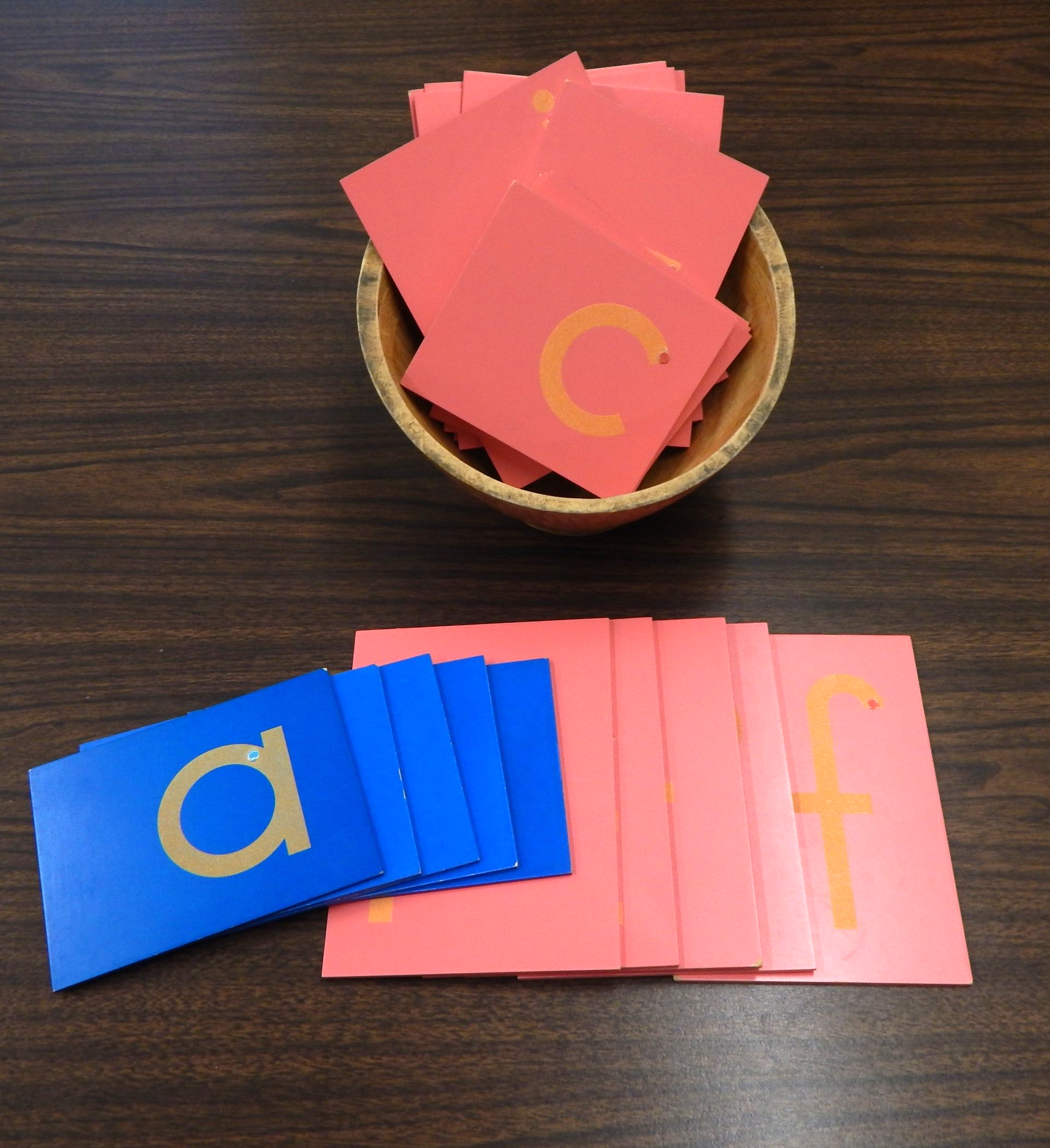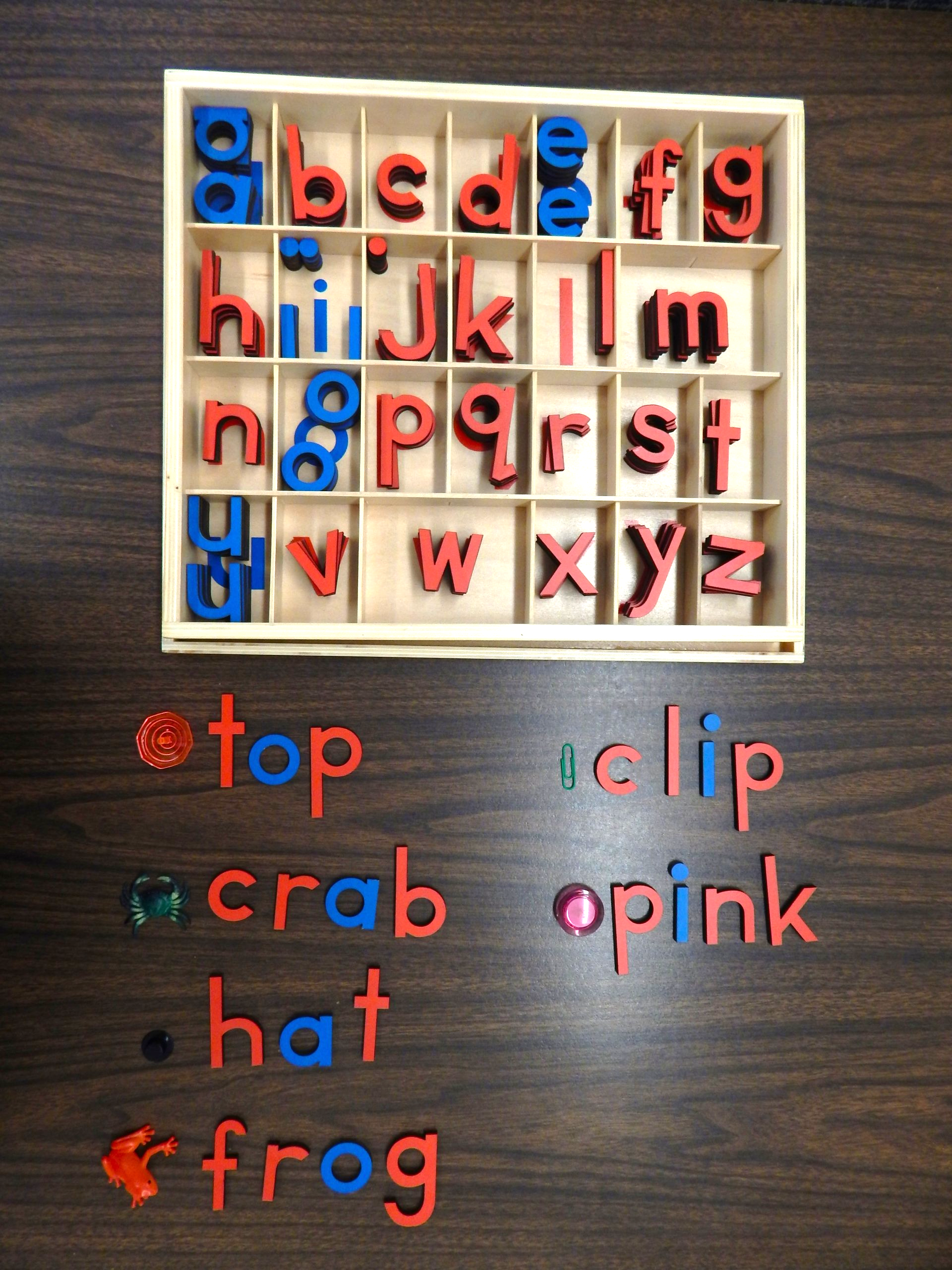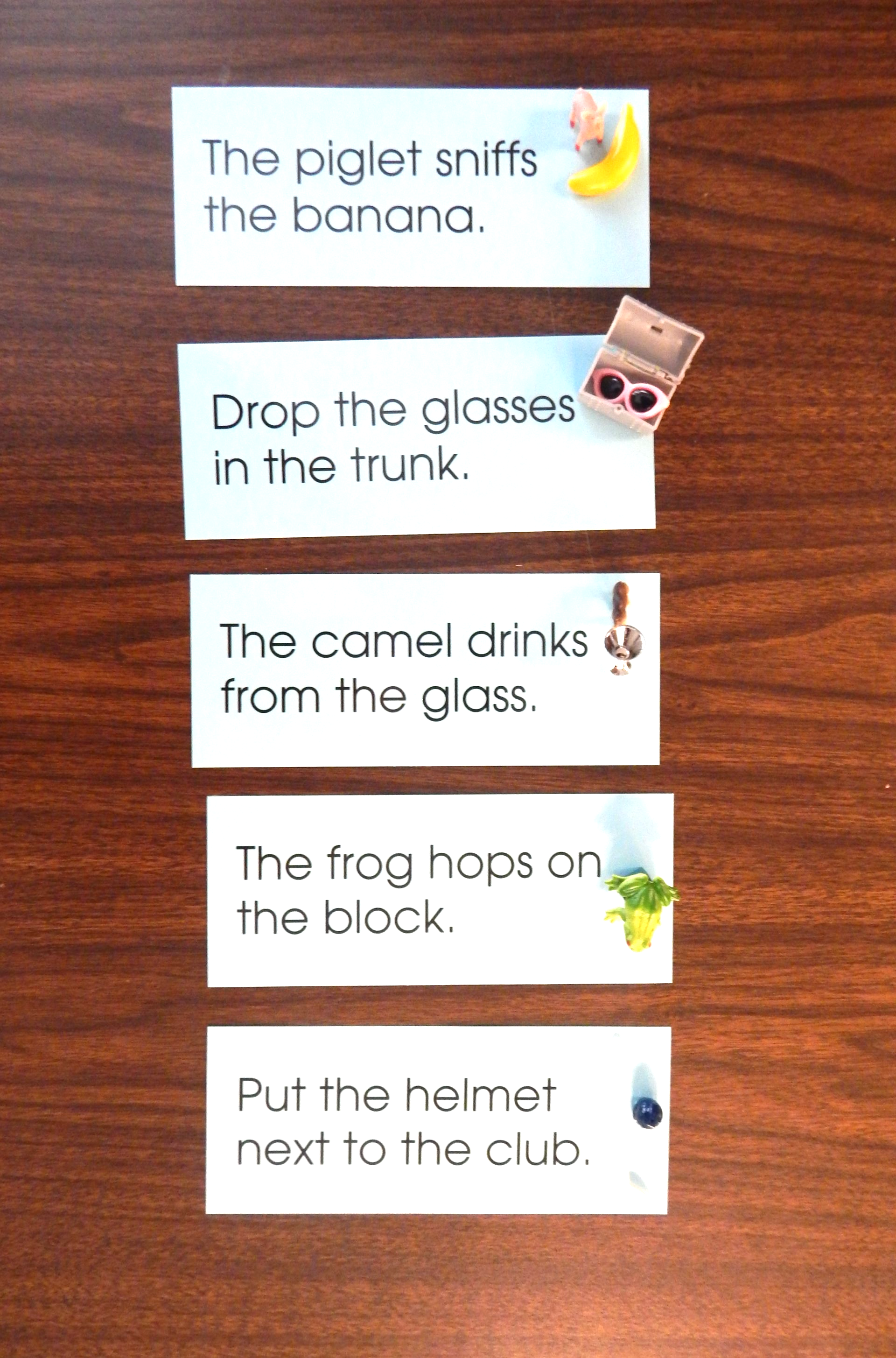Our reading process explained…
A frequent question of prospective parents recommended to us by friends and family members involve our reading approach. We get (and love) that our approach is different and based on how the brain develops in children from infancy through sixth grade. Let’s take a look inside the many pieces of our Montessori Center of Our Lady reading process…

Before preparing a child to read (and write), we want to share a few pieces of helpful information that need to be understood throughout your child’s journey into reading from ages three to six years old. Knowing them will help you should you collaborate with us in your home environment.
Reading and writing are both complex activities that require a child to develop many different skills and abilities and use them in concert. Dr. Montessori knew the young child’s absorbent mind functioned optimally when one difficulty was isolated from another, rather than performing multiple skills simultaneously.
In doing this within our classroom environments, we do so for the sake of the isolated skill, and without the child knowing they are skill one out of 20 that will have them reading. We know that one day, using all the skills and abilities that the child has built up, she will find herself able to read (and write). Here are some of the isolated components that lend themselves toward a child’s successful reading habit once a child is developmentally ready from a Montessori Children’s House (ages three through six) lens:
- The child’s ear is trained by listening to correctly spoken language long before they are reading/writing.
- The child’s speech is refined by practicing correctly spoken grammar long before learning parts of speech.
- The child is exposed to good literature long before their reading skills are in place.
- The child is given the expectation and time to speak in complete sentences.

- The lessons presented to the child are well thought out and unhurried.
- The child is given the time to do their work well, unhurried.
- The teacher learns when to ‘correct’ mistakes with the child and acknowledges the effort of the correction.
- The child is continuously exposed to the rhythm of language through poems, stories, and movement. Indirectly this expands the child’s memory.
- The child practices their original ideas orally, first through narration. Through the skill of narration, a child learns to create complete sentences, thus isolating the difficulty while preparing the child for written original sentences/stories.
- The child is taught two types of narration; both expose the child to an expansion of their receptive and expressive language processing capabilities. Narration allows the child to refine the expression of their thoughts clearly and beautifully.
- Picture narration – the child generally looks at a picture and describes what they see in complete sentences, thus expanding their observation skills and use of natural and proper language.
- Story narration – the child listens to oral stories and, in their own words, tells the story back to you. Doing so lengthens the child’s attention and comprehension and assists them in grasping the ‘main idea’ of what they have heard.
- The child begins to be exposed to the ‘rules of grammar. ‘Grammar helps the child to bring order to words in their mind. Montessori’s grammar is given to the children both orally and concretely simultaneously.
- The child’s first formal writing begins with the moveable alphabet (word building), not with pencil and paper.
"The child must see for himself what he can do, and it is important to give him not only the means of education but also to supply him with indicators which tell him his mistakes……The child’s interest in doing better, and his own constant checking and testing, are so important to him that his progress is assured. His very nature tends toward exactitude and the ways of obtaining it appeal to him." (Dr. Maria Montessori, The Absorbent Mind, p. 229)

As we host Parent Education opportunities throughout the school year, we choose to isolate the acquisition of reading vs. the entirety of language arts. Parent experiences in these events begin with sound games and Dr. Montessori’s Sandpaper letters and end with Story building.
It is important that each parent understands that there is no set timetable for when each child will begin to read. There are far too many prerequisite skills and specific reading sub-skills involved to attempt to make such a prediction. At Montessori Center of Our Lady, we are not merely working towards a child’s ability to read consonant-vowel-consonant words such as cat and bug. Instead, we are working towards a child’s ability to comfortably attack words, manipulate the various phonemes within a word, and have the ability to segment the phonemes at will. Good readers… solid and confident readers must be able to do all three with relative ease and comprehend what they have read.
Our work begins upon a child’s entry into Montessori Center of Our Lady and continues through their Elementary experience with us!
